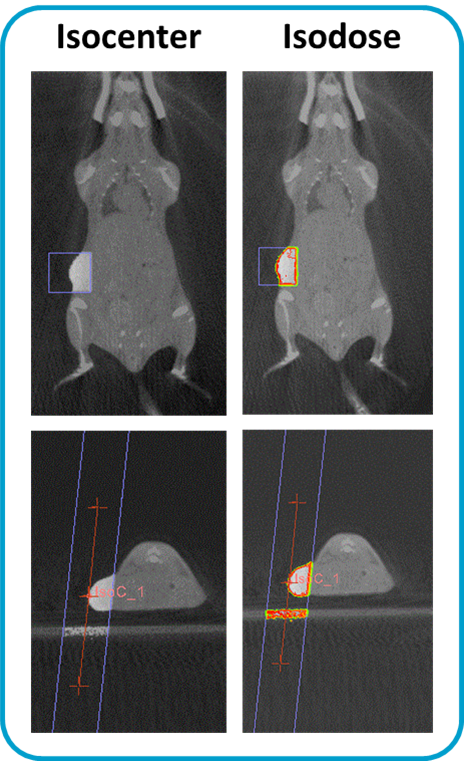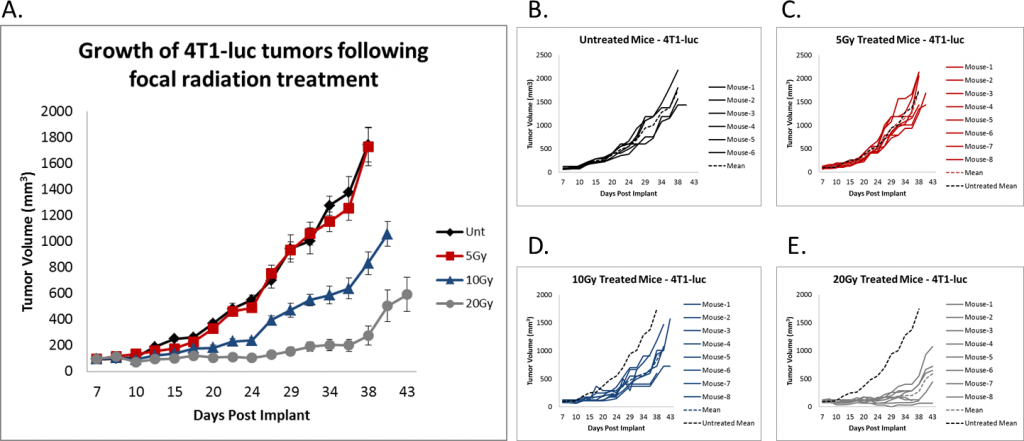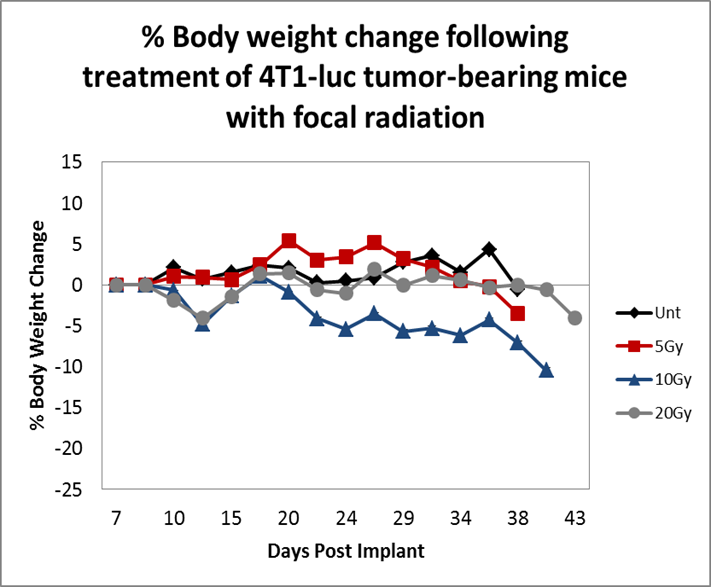The use of immuno-oncology therapies have seen remarkable progress in the last five years and are currently undergoing clinical trial use in combination with a variety of agents including radiation therapy (RT).1 RT is a main-stay in clinical oncology treatments with approximately 60 percent of cancer patients receiving RT at some point during their care. The clinical prevalence of RT underpins the need for effective testing of radiation combinations in the preclinical setting. In order to do this, baseline sensitivity of mouse tumor models to radiation is required.
One of the most commonly utilized syngeneic mouse models of mammary cancer is 4T1. We have characterized our 4T1-luc2 model to support studies with novel immuno-oncology agents. We have previously reported on the extensive immune profiling of 4T1-luc2 tumors along with the lack of robust anti-tumor activity following anti-CTLA-4 treatment (4T1-Luc2: An Orthotopic Mammary Cancer Model To Support Novel Immuno-Oncology Drug Discovery). In this month’s Model Spotlight we highlight the dose responsiveness of 4T1-luc2 tumors to focal beam radiation treatment.
We utilize the Small Animal Radiation Research Platform (SARRP) from Xstrahl to allow for precise radiation delivery to an exact anatomic target (Figure 1).





